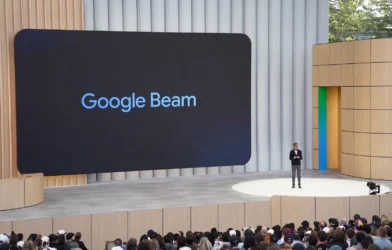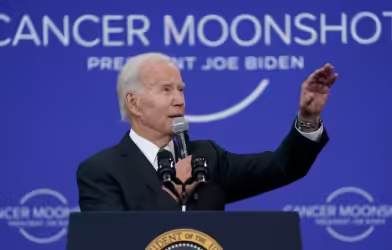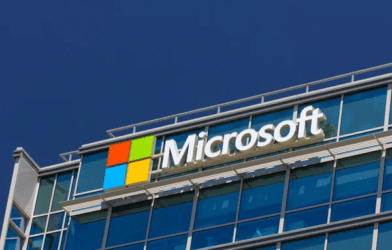Ordering takeout from a favourite restaurant on a phone app seems like a distinctly modern habit, but food delivery traces its roots far back beyond the smartphone era. In the 19th century, an Italian royal couple widely became known as the first pizza delivery customers. Over the following 130 years, food delivery history closely followed broader historical trends, shaped by wars, technological advancements, and changing labour and work patterns, which all influenced how and when people ordered food for delivery.
The increasing interest in nutrition and how food influences the way people feel may offer a clue about the future of food delivery. Thistle compiled a list of 10 major milestones in the history of food delivery, drawing from primary and secondary historical sources. Click through to explore how food delivery has evolved over the past 130 years.
Looking to add nutritious foods to your diet? Try a plant-based meal delivery kit.
1889: The first pizza delivered
In 1889, the first pizza delivery took place in—where else? Italy. King Umberto and Queen Margherita received the delivery from Pizzeria di Pietro e Basta Così. The Naples-based shop had created a new style of pizza and wanted to ensure the royals had a chance to try it. So, when the king and queen visited the city, head chef Raffaele Esposito personally delivered the pizza to them. Over a century later, pizza has become a mainstay of the food delivery ecosystem, enjoyed by both royals and commoners alike.
1890s : dabbawalas deliver lunch to workers in India
In the 1890s, workers in colonial India relied on a food delivery system called dabbawala, or “one who carries the box.” Instead of going home for lunch or leaving their job sites for food, dabbawalas brought home-cooked meals directly to workers in boxes they collected from them. The dabbawala system originated in Mumbai and has since spread to other cities. While the core concept remains the same, dabbawalas have adapted to modern times. Today, workers can request lunches and place orders through text or an app.
1992: chinese food delivery arrives in america
Chinese food delivery debuted in America in 1922 at the Los Angeles cafe Kin-Chu, which billed itself as the “only place on the West Coast making and delivering real Chinese food.” The restaurant used the relatively new telephone technology to take orders. Customers could call in their orders, and the restaurant would deliver as late as 1 a.m. Almost a century later, Chinese food remains a popular delivery option, especially during the holidays when other restaurants may close.
1950s : food delivery takes off
The popularization of television in the 1950s played a large role in the postwar boom of restaurant food delivery. As more and more homes added televisions, the concept of eating restaurant meals at home took off. Families could come home after long days at work and have their meals delivered, enjoying them while watching their favorite TV programs. This convenience became especially important as suburbs grew in popularity and car ownership surged. People no longer lived near their favorite restaurants, but cars made delivery more accessible. Eager to capitalize on the trend, many restaurants developed “television dinner” menus.
1954: meals on wheels launches
A new kind of food delivery was born when Meals on Wheels launched in 1954. The charity developed in Great Britain in response to the economic decline following World War II. Meals on Wheels delivered prepared food to homebound individuals who might not otherwise have access to meals. The organisation quickly expanded to other countries, including the United States. Meals on Wheels remains active today, delivering food to the homebound in cities around the world.
1960s : delivery system improves
Thanks in part to the newfound ubiquity of cars, delivery times dropped in the 1960s. At the forefront of this innovation, the founders of Domino’s Pizza introduced a guarantee that customers would receive their pizza within 30 minutes or less. The company later faced lawsuits over this guarantee. The lawsuits claimed that the 30-minute window was so short that it encouraged unsafe driving.
1994: pizza hut launches pizzanet
In 1994, Pizza Hut debuted one of the earliest web-based food delivery sites, Pizzanet. The site didn’t serve the entire country but was available only to people in Santa Cruz, California. Regardless, it provided an early model for digital food delivery and became one of the first public sites on the internet. With this in mind, pizza was likely one of the first goods bought and sold online.
1995 : Worldwide waiters goes online
In 1995, the first online restaurant delivery service, World Wide Waiter, launched. The service aggregated more than 60 restaurants in the San Francisco Bay Area and offered home or office delivery. One of the founders had surprising motivation for starting the company: While convenience and time-saving were appealing, he said that ordering food to his exact specifications sparked the idea for World Wide Waiter. “I liked to order sandwiches made in a particular way,” he told a local newspaper at the time. “It occurred to me that specific orders by computers would be best.’’
2000s : food delivery goes mainstream
In the 2000s, food delivery exploded in popularity. As smartphones became more widespread, food delivery apps dominated the delivery service industry. Office workers could order food directly from their phones to the office without stepping away from their desks, and people who preferred not to cook after work could have dinner delivered with just a few taps. Since the early 2000s, developers have continually introduced new food delivery apps. Some specialize in upscale takeout from high-end restaurants, helping these restaurants stay afloat during the pandemic.
2010s : make kit delivery revolutionising eating- In
In the 2010s, meal kits and ready-made meals became staples in many home kitchens. Some companies specialized in delivering all the ingredients for a meal to customers who wanted to try cooking something new but felt intimidated by grocery shopping. Other services catered to specialty diets, helping consumers stick to their dietary goals. These options not only inspired aspiring chefs to cook future meals on their own, but also allowed people to adjust to new diets without the legwork or stress of learning a new cooking routine.
Conclusion
The history of food delivery has evolved dramatically over the past 130 years, shaped by advances in technology, changing work patterns, and shifting societal needs. From the first pizza delivery to a royal couple in 1889, to the rise of meal kits and apps today, food delivery has continually adapted to meet the demands of consumers. Technological innovations like telephones, the internet, and smartphones have revolutionised how we order and receive meals, while broader social trends, such as the rise of television, suburban expansion, and specialised diets, have influenced the way we think about convenience and nutrition. As we look to the future, it’s clear that food delivery will continue to play an important role in our daily lives, offering new ways to connect with food, whether it’s a quick pizza delivery, a home-cooked meal from a kit, or a specialty diet catered to individual needs.









